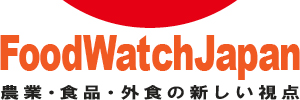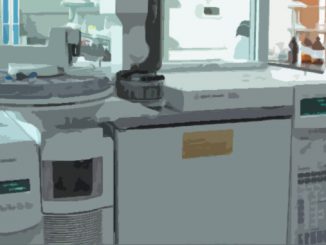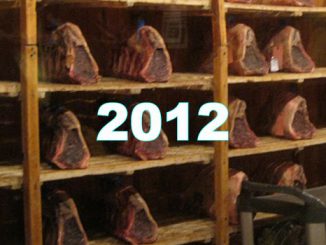
最近、あるバイテク企業に関する海外ドキュメンタリーが、NHKテレビで放映された。その企業の農業バイオテクノロジーに対する姿勢とその技術を支持する米国政府の役割に批判的なそのドキュメンタリーは、インターネットなどでも配信されている。私は、米国食品医薬品局(FDA)の食品バイオテクノロジー政策に関してそのドキュメンタリーのためにインタビューを受けた1人である。そのドキュメンタリーの中で、リポーターは私のコメントを基に、FDAの政策は科学情報よりも「政治」に立脚してものであると断言している。しかし、その主張はインタビュー時に私が述べたことと相反する。インタビューでは、誤解を与えぬよう、誤って伝えられぬよう、明瞭に、慎重に、簡潔に話すことが重要であるという教訓を、そのドキュメンタリーは私に思い起こさせることとなった。
Recently a video about a biotechnology company has appeared on NHK television, internet sites, and other sources that is critical of the firm’s approach to agricultural biotechnology and the United States Government’s role in supporting the technology. ( http://www.livevideo.com/video/embedLink/1C4FB64D50354B9A856504954B453CC9/580798/the-world-according-to-monsant.aspx ) This author was one of the individuals interviewed for the video concerning FDA’s food biotechnology policy. In the video, the reporter asserts that based on my comments, FDA’s policy was predicated on “politics” rather than on scientific information, an assertion that is not consistent with the discussion I gave during the interview. The video is a reminder that it is important to speak clearly, carefully, and succinctly during interviews so as not to provide an opportunity to be misunderstood or misrepresented.
学んだ教訓であっても、一瞬でも忘れてしまっていれば、悪い印象を長く残すことになる。今回のケースは私の経験としては例外的なものであったが、食品バイオテクノロジーについてFDAを代弁してきた十数年間にあったいくつかの状況や出来事について、思い起こさせた。インタビューは、ある問題について人々に情報や知識を伝える機会を与えてくれるが、ある場合には、インタビューを受ける側の個人が意図しなかった印象を与えてしまうことになったりもする。
2006年、私は、日本、台湾、韓国の各都市での講演を終え米国に戻ったすぐ後、New York Cityで当該ドキュメンタリーのインタビューを受けた。インタビューは、カメラ収録された。インタビューの途中で私は、リポーターがドキュメンタリーの中心となるある企業と米国の農業バイオテクノロジーに対する姿勢に偏見を持っているようだと気づいた。その後、そのドキュメンタリーについて何も知らされることはなかった。それについて知ったのはごく最近のことで、かつての同僚から連絡があり、私の発言について質問をしてきたのがきっかけだった。
ドキュメンタリーを見てびっくりした。86年の米国の政策を述べている段で、なんと私は「政治的」という言葉を使っているではないか。その発言の前に私はインタビューで、米国政府の政策の礎となった豊富な科学データや資料について説明をしていたが、そのドキュメンタリーはそれらには一切ふれていない。
リポーターはそのドキュメンタリーの中で、私が米国の政策は科学よりもむしろ政治的判断によるものであったことを認めたと述べたのだ。リポーターのその発言は、私がインタビューで語ったことと相反する。私が「政治的」という言葉を使ってしまったことは不運なことであった。そして、それは言葉を選ぶということがいかに重要であるかを物語る。
十数年に渡って私はFDAを代表して印刷・放送メディアに対応してきたが、その頃のリポーターとの経験はかなり違ったものであった。ほとんど例外なく、リポーター諸氏は、FDAの食品バイオテクノロジー政策について理解しそれを正確に伝えたいと思っていることは明らかだった。もちろん、記事には異なった見解も盛り込まれるということは予想しなければならない。そのため、リポーターには簡潔かつ明確にメッセージを伝えることが重要である。当該ドキュメンタリーのインタビューのように、質問が非常に大まかで収録時間も無制限であるような時は、その体制を保つのが非常に難しい。なにしろ集中し続けなければならないのだから。
言葉と同様、画像や映像もメッセージに影響を及ぼす。FDA時代、幾度となくリポーターから白衣を着てFDAの研究所でインタビューを受けてもらえないかと依頼されたことがある。そのような申し出には丁重にお断りをした。なぜなら、私は当時、研究室で働く科学者ではなかったし、FDAもバイテク食品の実験研究はしていなかったからだ。ゆえに、人々に伝えられたであろうそのイメージが、適切なものとは思えなかったのだ。
別のケースでは、Washington, D.C.の中心にあるFDAの庁舎の前通りに小さな青果スタンドがあったのだが、リポーターは、その隣でインタビューを撮影したいと言ってきた。92年のその当時、FDAはバイテク政策を発表してはいたが、バイテク食品の科学的評価をまだ1つも終えてはいなかった。その映像は、バイテク食品はすでに店頭に並んでいるのだと人々に誤解を与えてしまう恐れがあると感じられた。
そこでリポーターは、FDAの庁舎から近いこともあって、それでは代わりに米国連邦議会議事堂を背景にインタビューを行うのはどうかと持ちかけてきた。同意はしたが、地上レベルからでは、議事堂はほかのビルの陰に隠れてしまう。するとFDAの報道担当官が、FDA庁舎の屋上なら議事堂がきれいに入りますよと言ったのには驚いた。屋上は平らで周りを囲む擁壁がない(筆者は高所を好まない)。議事堂をきれいに映し出すため、当然のことながら、リポーターは私に極力端に立つことを求めた。はるか下方の高速道路の喧噪が聞こえた。リポーターの質問に答えるべく全力を挙げて集中したが、私の脚はがくがくと震えていた。インタビューの後、FDAの報道担当官はよくやったと言ってくれたが、屋上でのインタビューに二度と志願することはなかった。
画像や映像の中で言葉が戦略的に配置されることがある。それは時に、インタビューの受け手が意図したものとは異なる意味を伝えるものとなってしまう。米国に「People」という週刊誌がある。人気のある雑誌で、私は一度インタビューを受けた。インタビューの後、リポーターは私の写真を撮ってもいいかと尋ねた。簡単なスナップ写真を撮るのかと思い承諾したら、なんとカメラマンはFDAの会議室に手の込んだセットを用意して待っていた。
カメラマンは私に図表の前でポーズをとるよう指示したが、それはバイオテクノロジーに関する米国学術研究会議(NRC)の報告書に掲載されていたイラストのコピーであった。その図表は、植物育種の改良法は時とともに進化してきたことを示したもので、分子生物学的進歩を含む数々のそういった進歩を、新しい育種法の増大する「パワー」と表現していた。図表そのものははっきりと写らないまでも、その「パワー」という文字が私の横にくるように写したいのだと直感した。
幸運なことに、カメラマンはその図表は使わず、代わりに、部屋の壁に掛かっていた大きな世界地図を使うことに同意してくれた。そのほうが中立な立場であることをより表現できる。画像や映像は、コミュニケーションにおいて重要なツールである。それらは、人々に伝えんとするメッセージを強化してくれる。リポーターは競争の激しい世界で自分たちの記事を売り込でいかなければならず、ゆえに彼らとじっくり話し合うことは重要である。彼らは、読者や視聴者を引き付けるための興味深い素材を必要としているのだ。とはいえ、その素材は、インタビューの受け手のメッセージを誤り伝えるものであってはならない。
ほとんどのリポーター諸氏は、彼らがインタビューする個人の意見を正確に伝えたいと思っている。しかし、例外もある。このコラムを書くきっかけとなった冒頭のドキュメンタリーがまさにそうである。明瞭に簡潔に話すこと。それがメッセージが正確に報道される最善のポイントである。
*本稿で表記するバイテクは、遺伝子組換えを意味するものとする(FoodScience編集部)
Lessons learned but momentarily forgotten can leave lasting negative impressions. This case was exceptional in my experience. However, it leads me to recall some of the situations that arose during more than ten years of speaking on behalf of FDA about food biotechnology. An interview can give one an opportunity to inform others about an issue but in some cases may serve to give an impression that the person being interviewed does not intend.
In 2006 I was interviewed for the referenced video in New York City, having returned from a speaking tour of several cities in Japan, Taiwan and South Korea. The interview was conducted on camera. Midway through the interview, I realized that the reporter seemed to have a bias against the firm and the U.S. approach to agricultural biotechnology. Since that time, I had not heard about the video until I was contacted by a colleague recently and asked about my statements.
On viewing the video, I was surprised that I had used the word “political” in discussing the 1986 U.S. policy. The video does not show the explanation that I gave prior to that remark regarding the extensive scientific data and information that was the foundation of the U.S. government’s policy. The reporter stated in the video that I confirmed that the U.S. policy was based on politics rather than on science. That statement contradicts the interview I gave. My use of the word “political” was unfortunate and illustrates how important one’s choice of words can be.
During the more than ten years that I represented FDA to the print and broadcast media, my experience with reporters was quite different. Almost without exception, I found that reporters wanted to understand and accurately represent FDA’s food biotechnology policy. Of course, one must expect that alternative views will be included in articles, so it is important to give the reporter a statement that is concise and clear. An interview such as this video is more difficult to control when the questions are very general and recording time is not limited. One has to stay focused.
Images as well as words can affect the message. On several occasions, a reporter asked me to put on a scientist’s lab coat and be interviewed in an FDA laboratory. We declined such requests because I was not a bench scientist at the time, nor did FDA conduct any laboratory research on biotech foods. Thus, the image that would have been conveyed to the public did not seem appropriate.
In another case, the reporter wanted to film the interview next to a small fruit and vegetable stand on the sidewalk outside of the FDA building in downtown Washington, D.C. At that time in 1992, FDA had published its biotech policy but had not completed a scientific evaluation of any biotech food. We felt the image could mislead the public to think biotech foods were already on the market.
Instead, the reporter suggested that the interview be conducted with a view of the U.S. Capitol building (the equivalent of the Diet in Tokyo) in the background because it was close to the FDA building. We agreed, however, there were other buildings in the area that prevented a view of the Capitol from the street level. I was surprised when the FDA Press Officer said that we could do the interview from the top of the FDA building with a fine view of the Capitol. It happened that the top of the building, was flat with no retaining wall around it (I am not fond of heights). Of course, the reporter wanted me to stand near the edge so he could get the best view of the Capitol. I could hear the traffic from a busy expressway far below. I did my best to concentrate on answering the reporter’s questions, but I was very aware that my legs were shaking. Afterwards, the FDA Press Officer said that I did very well, but I never again volunteered for a roof top appearance.
A strategically placed word in an image may convey a different meaning than the person being interviewed intends. Following an interview for People Magazine, a popular magazine in the U.S., the reporter asked if she could take my picture. I agreed expecting to have a quick snapshot taken, but the photographer had an elaborate set up prepared in the FDA conference room, complete with a large chart that I had used to in presentations on FDA’s new food biotech policy.
He asked me to pose in front of the chart that was a copy of an illustration from a U.S. National Research Council report on biotechnology. The chart showed that improved methods of plant breeding have evolved over time and refers to these advances as the increasing “power” of new breeding methods, including molecular advances. I realized that the photographer wanted the word “power” to appear beside me in the photograph, though the chart itself would not be visible.
Fortunately, he agreed to dispense with the chart and use the large map of the world that was on the wall in the room that I thought made a more neutral background. Images are important tools in communication that can enhance the intended message to the public. It is important to work with reporters who must market their products in a competitive world. They need material that is interesting to attract readers and viewers, but that material must not distort the message of the person being interviewed.
Most reporters want to accurately convey the views of the individuals they interview, though there are exceptions, as was the case for the video that prompted this article. Speaking clearly and concisely is the best assurance that one’s message will be reported accurately.
※このコラムは「FoodScience」(日経BP社)で発表され、同サイト閉鎖後に筆者の了解を得て「FoodWatchJapan」で無償公開しているものです。




